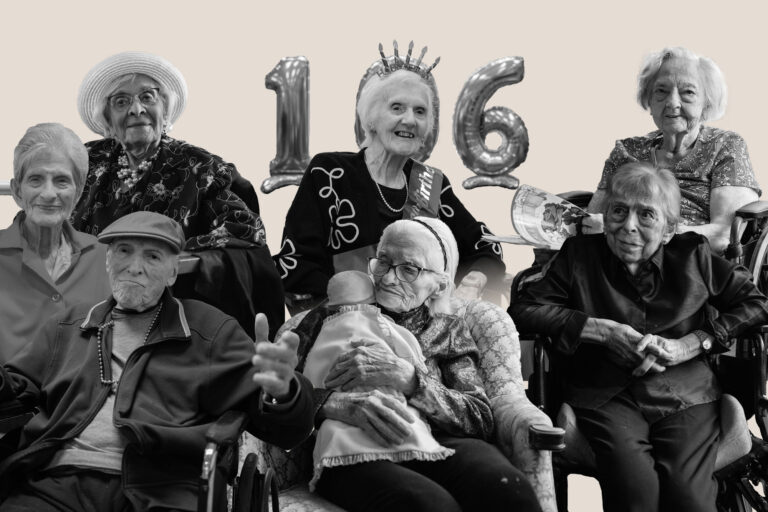
Ellen Ryan is an award-winning writer/editor specializing in profiles, Q&As, and case studies; consumer health; education and career change, business; and grammatical near-perfectionism. (Nobody’s perfect.)
If an older adult you love or care for becomes easily agitated, disoriented, or confused, your first thought probably won’t be: urinary tract infection. But maybe it should.
In younger people, urinary tract infections, or UTIs, are typically marked by a burning sensation when urinating. But in older people, the symptoms are often different.
UTIs can cause sudden confusion or agitation, particularly in older people and people with dementia. If the person has a sudden, unexplained change in their behavior, a UTI may be to blame, although it’s important not to rush to conclusions and self-diagnose without seeing a doctor.
Urinary tract infections are a painful but easily treatable affliction more common in women than men. Older people are more susceptible — more than 10% of women over age 65 have had a UTI in the past year, as have almost 30% of women over age 85, according to the journal Aging Health.
Diagnosis gets complicated, particularly in people with dementia — in part because the symptoms can be so far removed from the urinary tract itself. Plus, dementia makes communication difficult, says June McKoy, MD, MPH, academic geriatrician at Northwestern Medicine and professor of medicine, preventive medicine, and medical education at Northwestern University Feinberg School of Medicine.
Being a detective
This conundrum means the caregiver needs to be a detective, says Magdalena Bednarczyk, MD, medical director of the Rush Center for Excellence in Aging and assistant professor at Rush Medical College.
“Medical personnel will rely on you for a history,” Bednarczyk says. “Detailed observations and a reliable history from the caregiver are very important.”
Changes in behavior are especially notable. “Medical staff have to view the entire picture — lab results, symptoms, and history,” Bednarczyk says. “The caregiver’s report is especially needed if the patient can’t report on herself. Caregivers need to describe what’s normal and what’s not.”
But while it’s helpful for caregivers to report symptoms, they need to be careful not to diagnose the condition themselves. “There’s a tendency for caregivers to tell a medical professional, with good intentions, ‘My mother gets confused, she has UTIs, we need antibiotics,’” McKoy says.
Instead, advocate for the older adult with real data, such as last bowel movement, water intake, and changes in attention span. The professional can compare data to records from the last visit.
UTI symptoms
In older adults, diagnosis is tricky. The typical UTI symptoms of pain and burning may appear — or may not.
Additional symptoms that older people may experience include:
- Weakness, lethargy.
- Lack of appetite.
- Urinary changes: odd-smelling urine; less-than-usual volume; may be dark yellow or orange, not clear or light.
- Constipation.
- Pain in belly, above pubic bone.
- Pain below love handles on either side or both.
- New incontinence.
Treatment for UTIs
Physicians treat UTIs with antibiotics, but finding the right antibiotic involves identifying the bacteria strain and determining the correct drug dosage. It’s important to bring symptoms to a professional’s attention right away to allow time for proper diagnostic testing.
Too little medication won’t kill the bug, and too much risks promoting antibiotic resistance (making the illness harder to treat) or secondary infections such as C. diff.
Chronic UTIs are a red flag. Something else may be going on, Bednarczyk says. People who experience frequent UTIs should get evaluated by a urologist, urogynecologist, or infectious disease specialist, she says.
Preventing UTIs
Preventing UTIs begins with practicing good hygiene. Yet, aging often means impairments, such as losing range of motion. This and cognitive losses are two reasons older people may find it harder to clean themselves after using the toilet. “An older person may need the caregiver in the bathroom for help,” Bednarczyk says.
Advice for preventing UTIs in older patients includes:
- Wipe front to back to avoid transferring bacteria from the rectum to the urethra, the tube that takes urine from your bladder to the outside.
- Shower, don’t bathe, for the same reason. Because aged skin is frail, shower no more than once a day or perhaps three times a week, McKoy says.
- Change diapers and undergarments often to hinder bacteria growth.
- Use the toilet often. Have a bedside commode in the room. “It’s hard on the caregiver, but have the person use it every two hours,” McKoy says.
- Don’t hold back urine. Urinary retention, or the inability to empty the bladder, is more common in older men and in men with prostate problems. It can be a risk factor for a UTI. Men with prostate problems and urinary issues may need a catheter, a change in medication, or a surgical correction, Bednarczyk says.
- Drink plenty of water to flush out the bladder. “Older people hate this, especially if they’re on water pills,” McKoy says. Flavored water or water with slices of fruit can encourage more drinking.
- Ask a health provider about vaginal estrogen cream. Even a low dose can strengthen a woman’s vaginal wall against bacterial infection, Bednarczyk says.
Although one UTI increases the likelihood of another, experts agree: Don’t jump to conclusions. Several possibilities — from constipation to infections — may explain vague symptoms. Better to verify a guess with laboratory work than to risk a quick but wrong answer.








